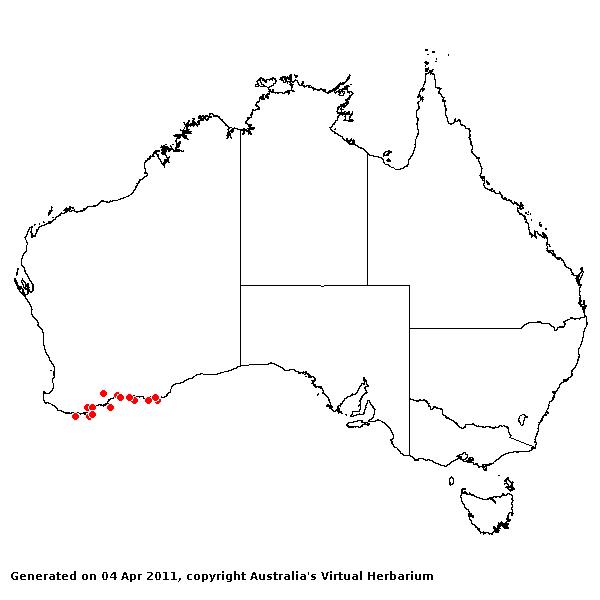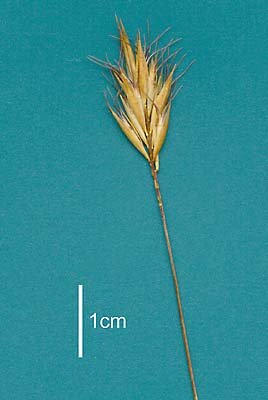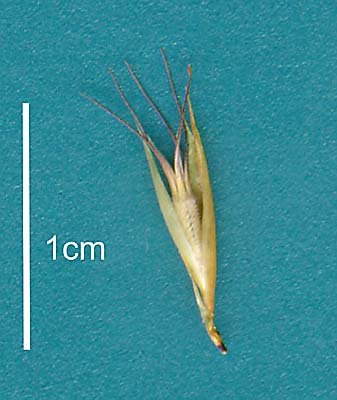Amphipogon avenaceus R.Br. Prodr.
175 (1810).
Classification. (GPWG 2001) : Subfamily
Arundinoideae. Tribe Amphipogoneae.
Type of Basionym or
Protologue Information: HT: R. Brown 6229, no date, Australia:
Western Australia, New Holland (BM; IT: US-75457 (fragm. ex BM)).
Key references
(books and floras): [1810]. R.Brown, Prodromus (175), [2002] D.Sharp
& B.K.Simon, AusGrass, Grasses of Australia.
Derivation: L.
-acea, resembling. With inflorescences and/or spikelets similar to those
of Avena.
Habit.
Perennial. Rhizomes present, short. Culms erect or geniculately ascending,
20–35 cm tall, 3–5 -noded. Ligule a fringe of hairs. Leaf-blades filiform,
involute, 5–15 cm long, 1–2 mm wide.
Inflorescence.
Inflorescence solid, a panicle. Panicle oblong, 4 cm long, 1 cm wide.
Spikelets.
Spikelets pedicelled. Fertile spikelets 1-flowered, comprising 1 fertile
floret(s), without rachilla extension, oblong, laterally compressed, 12–13 mm
long.
Glumes. Glumes
similar, thinner than fertile lemma. Lower glume lanceolate, scarious, much
thinner on margins, without keels, 3 -nerved. Upper glume lanceolate, 10–12 mm
long, scarious, without keels, 3 -nerved.
Florets.
Fertile lemma 8–9 mm long, without keel, 3 -nerved. Lemma surface indumented.
Lemma apex lobed, awned, 3 -awned. Median (principal) awn 4 mm long overall.
Lateral lemma awns present. Palea 2 -nerved, without keels. Palea apex lobed,
awned. Anthers 3.
Continental Distribution:
Australasia.
Australian
Distribution: Western Australia.
Western Australia:
Menzies, Warren, Eyre.




